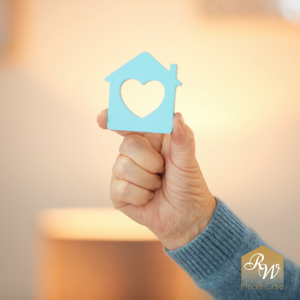-
MARCH 28 - 30, 2025
ELEVATE YOUR HOME LIVING EXPERIENCE!
It’s the big one – the show for homeowners, buyers, renovators, DIYers and more! Step into a world of inspiration and innovation as we transform the Halifax Exhibition Centre into a haven for indoor and outdoor living. Discover the latest trends, products, and services that will help you turn your dream home into a reality.
-
MARCH 28 - 30, 2025
ELEVATE YOUR HOME LIVING EXPERIENCE!
It’s the big one – the show for homeowners, buyers, renovators, DIYers and more! Step into a world of inspiration and innovation as we transform the Halifax Exhibition Centre into a haven for indoor and outdoor living. Discover the latest trends, products, and services that will help you turn your dream home into a reality.
-
MARCH 28 - 30, 2025
ELEVATE YOUR HOME LIVING EXPERIENCE!
It’s the big one – the show for homeowners, buyers, renovators, DIYers and more! Step into a world of inspiration and innovation as we transform the Halifax Exhibition Centre into a haven for indoor and outdoor living. Discover the latest trends, products, and services that will help you turn your dream home into a reality.
-
MARCH 28 - 30, 2025
ELEVATE YOUR HOME LIVING EXPERIENCE!
It’s the big one – the show for homeowners, buyers, renovators, DIYers and more! Step into a world of inspiration and innovation as we transform the Halifax Exhibition Centre into a haven for indoor and outdoor living. Discover the latest trends, products, and services that will help you turn your dream home into a reality.
Aging In Place: Tips for Keeping Senior Homes Safe
Aging in place is the concept of older adults continuing to live safely, comfortably, and independently in their own homes, rather than moving to assisted living or long-term care facilities. In Nova Scotia, this idea has gained significant attention, especially due to the shortage of hospital beds and long-term care spaces. Aging in place allows seniors to maintain a sense of autonomy and stay in familiar surroundings, which can be emotionally and psychologically beneficial. However, it’s essential to take proactive steps to ensure that seniors can live safely and comfortably as they age.

Creating a safe and accessible home is crucial for seniors who want to continue living independently. With age, physical capabilities often change, and certain areas of the home can become hazardous. Home modifications can make a significant difference in reducing the risk of accidents, ensuring comfort, and enhancing overall safety. Simple adjustments, such as installing grab bars, improving lighting, and updating flooring, can help prevent falls and facilitate daily activities.
- Grab Bars: Installing grab bars in key areas of the home, especially in the bathroom near toilets and in showers, is one of the most effective ways to reduce the risk of falls. These bars provide much-needed support for individuals with limited mobility, helping them move safely while performing tasks such as bathing or using the toilet. Since falls are a leading cause of injury among seniors, adding grab bars can drastically improve safety and peace of mind.
- Better Lighting: Diminished vision is a common issue as we age, and poor lighting can exacerbate the challenges of navigating through the home. Inadequate lighting can lead to tripping or bumping into furniture and obstacles. Installing brighter and more evenly distributed lighting, particularly in hallways, stairways, and kitchens, allows seniors to move around their homes with greater confidence and reduces the risk of accidents. Motion-sensing lights can also be a great addition, especially in bathrooms or along paths where seniors may need to walk at night.
- Non-slip Flooring: Wet or slippery floors can be dangerous for anyone, especially seniors. In high-risk areas such as the kitchen, bathroom, and hallways, non-slip flooring can provide a critical layer of safety. Replacing slick tiles with textured or slip-resistant surfaces can prevent dangerous falls. For existing floors, adding slip-resistant mats or rugs can be an easy and cost-effective solution to reduce slipping hazards.
While many people mistakenly believe that aging in place means living without support, it’s actually about adapting the home to meet the evolving needs of seniors. Aging in place doesn’t imply isolation; rather, it focuses on creating an environment that supports independence while ensuring that help is available when necessary. Modifications to the home can make it easier for seniors to live autonomously, while also allowing them to stay connected to their community, family, and friends. Familiar surroundings, established routines, and long-term social connections all contribute to a senior’s well-being and sense of belonging and community connection.
By planning ahead and making simple, yet impactful changes, families can create safer and more comfortable environments that allow seniors to thrive as they age in place. Whether through small home improvements, community resources, or support from additional home services, families can ensure that their loved ones live safely, independently, and with dignity for years to come. Aging in place is not just a trend, but a lifestyle choice that can enhance quality of life and bring peace of mind to both seniors and their families.
Written by: Jenna Fralick, Care Director, Remember When HealthCare
For more resources, be sure to check out the Remember When HealthCare website at www.rwhc.ca

